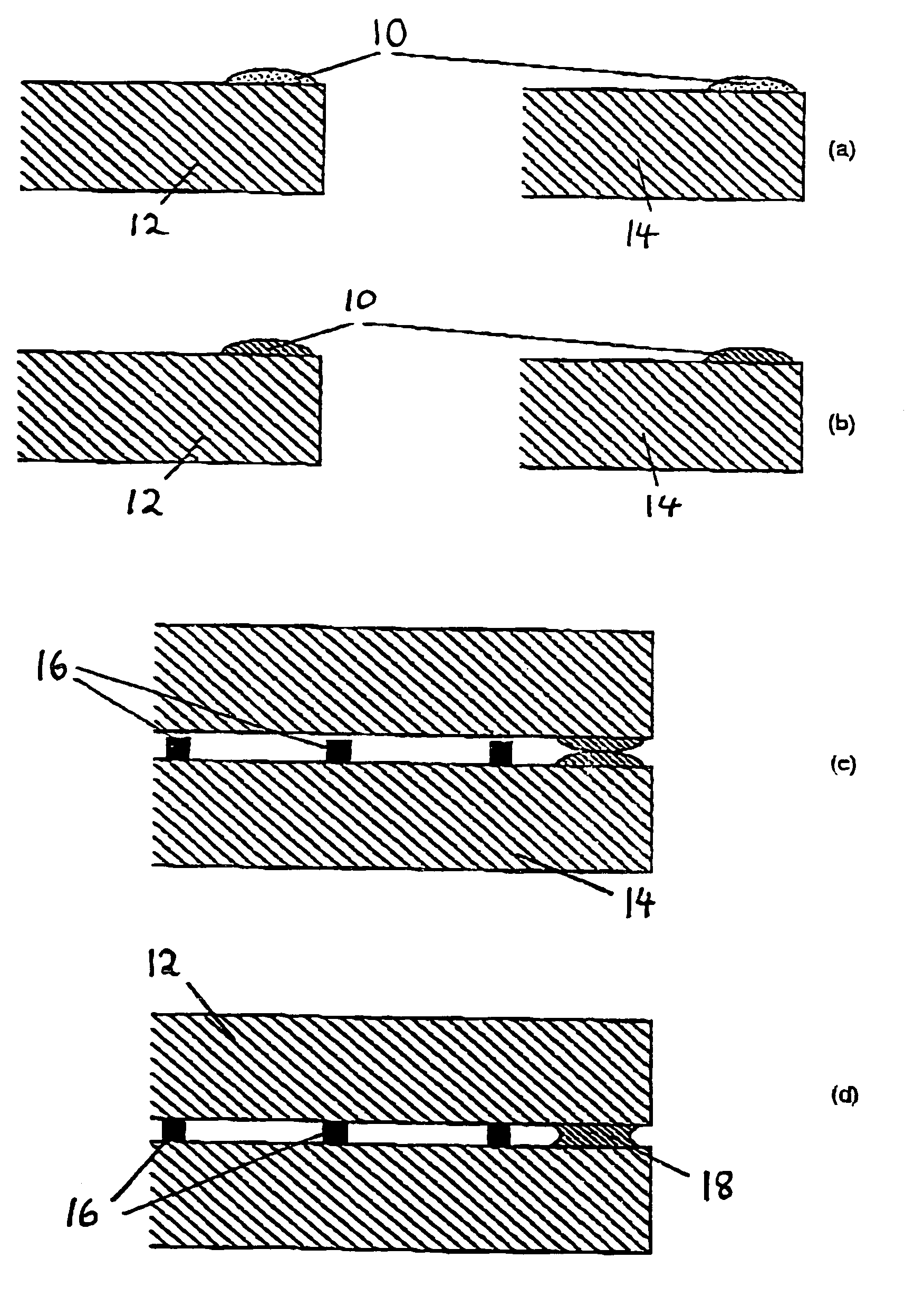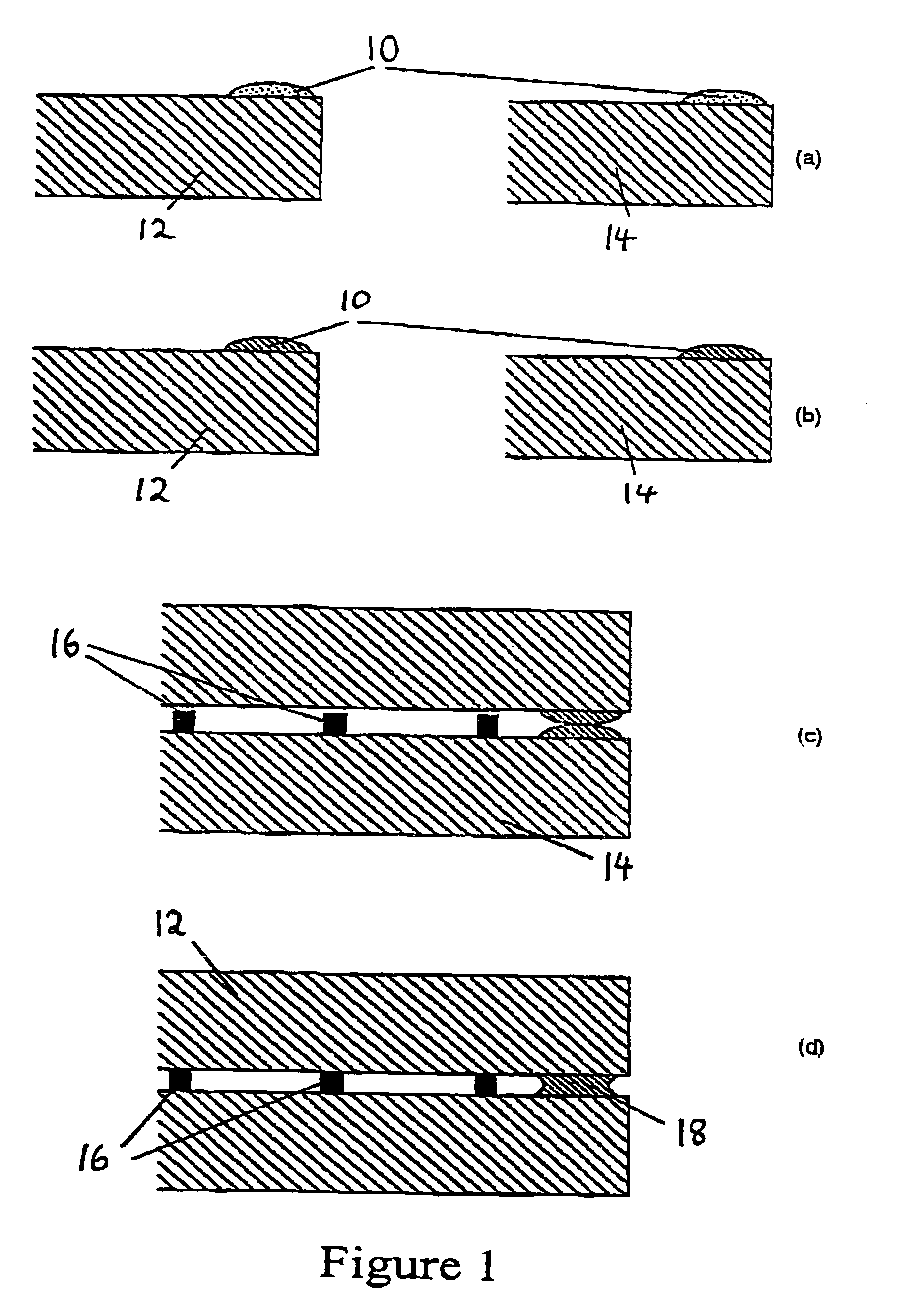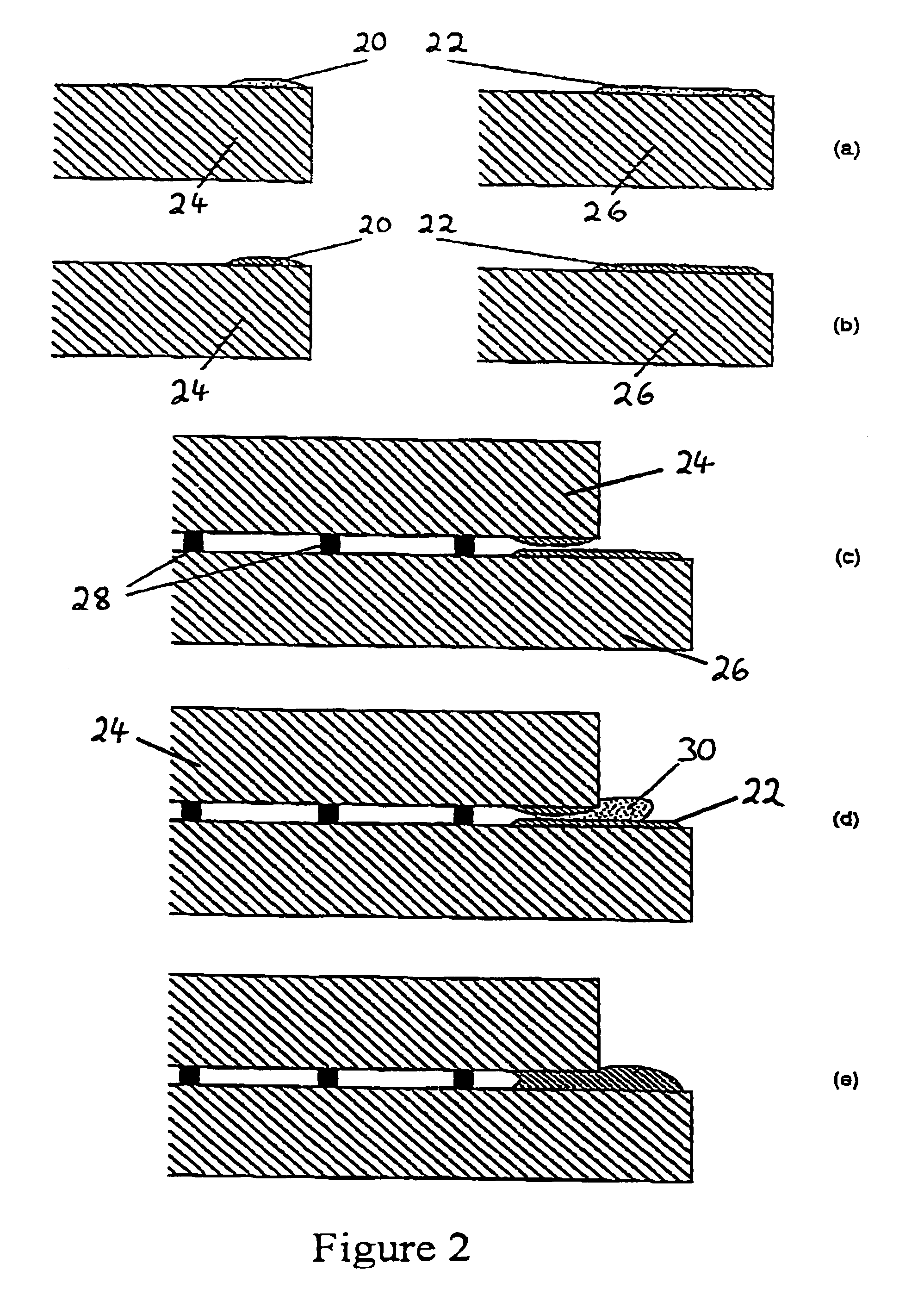Glass panel
a glass panel and glass technology, applied in the field of glass panels, can solve the problems of undesirable removal of residual stresses during the formation of solder glass seals, significant relaxation of internal stresses in glass sheets, and inability to ignore the influence of heating on glass sheets for all purposes, so as to avoid annealing of either glass sheet
- Summary
- Abstract
- Description
- Claims
- Application Information
AI Technical Summary
Benefits of technology
Problems solved by technology
Method used
Image
Examples
Embodiment Construction
[0023]We seek to manufacture a glass panel comprising two confronting edge sealed glass sheets. In FIG. 1(a) liquid solder glass 10 is deposited as marginal bands on the surfaces of two glass sheets 12, 14. In FIG. 1(b) the glass sheets 12, 14 are then tempered to establish the necessary stresses within the glass sheets 12, 14 for heat strengthening the same. During the tempering process, the solder glass 10 melts and forms an hermetic bond to the surface of the glass sheets 12, 14. This bond is achieved by interdiffusion of the atoms of the solder glass 10 and the glass sheets 12, 14, typically over a distance of approximately 0.1 μm. As the temperature is decreased at the end of the tempering process, the solder glass solidifies.
[0024]The two tempered glass sheets are then assembled into a configuration illustrated in FIG. 1(c), with the bands of solidified solder glass 10 being positioned on top of each other. In the configuration illustrated in FIG. 1(c), an array of support pil...
PUM
| Property | Measurement | Unit |
|---|---|---|
| distance | aaaaa | aaaaa |
| temperatures | aaaaa | aaaaa |
| temperature | aaaaa | aaaaa |
Abstract
Description
Claims
Application Information
 Login to View More
Login to View More - R&D
- Intellectual Property
- Life Sciences
- Materials
- Tech Scout
- Unparalleled Data Quality
- Higher Quality Content
- 60% Fewer Hallucinations
Browse by: Latest US Patents, China's latest patents, Technical Efficacy Thesaurus, Application Domain, Technology Topic, Popular Technical Reports.
© 2025 PatSnap. All rights reserved.Legal|Privacy policy|Modern Slavery Act Transparency Statement|Sitemap|About US| Contact US: help@patsnap.com



